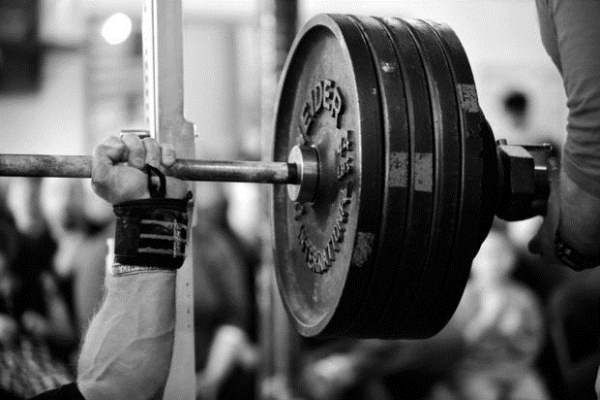
Common Methods Used to Build Strength
When you’re first introduced to bodybuilding it can become easy to rely on lifting only heavy weights to build size and strength. The reason why this method is taught early on is that it simply works.
Heavier weights can force more muscle fibers to be recruited than movements with lighter weights, which is why it’s not uncommon to spot guys lifting more weight than they should in the gym.
The alternative, training with lighter weights to failure, is another effective method to build size and strength, but only for certain body parts.
The repetitions should also fall within a certain range, as lifting for endless reps can lead to the law of diminishing returns to take effect (see How the Law of Diminishing Returns Apply to Bodybuilding).
So, light and heavy weights both serve their purpose when it comes to weight training, but they should be used at appropriate times for the best results.
In this article, I’ll go over how to best use low rep exercises to your advantage.
How to Use Low Reps Exercises to Build Size and Strength

Bodybuilders that have been adding muscle slowly over the years recognize the benefits of training with heavier weights in lower rep ranges. This is because lifting in lower rep ranges increases the force of production on all of the muscles targeted.
While heavyweights are effective for increasing strength steadily over time, it isn’t the only variable that helps your muscles adapt faster (see Training Variables to Create Progressive Growth).
It can be argued that higher reps create a likelihood of fatigue, however, the optimal range for muscle hypertrophy has always fallen between 8-12 repetitions.
Before you lower or raise a weight to contract your muscles, the muscle fibers are recruited from slow twitch to fast twitch, also known as The Size Principle.
Slow-twitch muscles are classified as type 1 fibers, which are small muscles that are designed best for endurance. Fast-twitch muscle fibers, better known as type 2 fibers are what grow the biggest when trained.
Training with strictly low reps may not be better for conditioning your muscles for strength endurance, which may shorten your gains in the long term.
So, when should you use low rep exercises in your workout routine and what is the best way to build strength over time?
Training for Size
(Upper Body)
Training for the upper body is much different than what should be done for the lower limbs. Since homo sapiens were designed as bipeds, not quadrupeds (four-legged animals), our upper arms routinely receive less exercise activity than our lower limbs.
This could possibly be why lower rep ranges exercises are usually more effective than higher ranges for size and muscle growth. Compound movement exercises in the upper body also respond well with lower rep ranges with enough progressive growth (see How to Use Compound Movements for Better Strength).
(Lower Body)
Lower body training is usually more intensive with a focus on higher rep ranges. This is because the legs have more type 1 fibers than type 2, which means a higher threshold of resistance will be required to see improved strength and size.
(Type 1 & 2 muscle fibers distribution in the lengths will always vary from each individual due to genetics).
The Wrap Up
Low repetitions can be used to build size and strength, but it isn’t the only variable that can use to do so. Lower rep ranges help condition type 2 muscle fibers, which responds well to heavier force production from weights. To build the most size, focus on using lower ranges for upper body exercises and higher rep ranges for the lower body.

Leave a Reply
You must be logged in to post a comment.